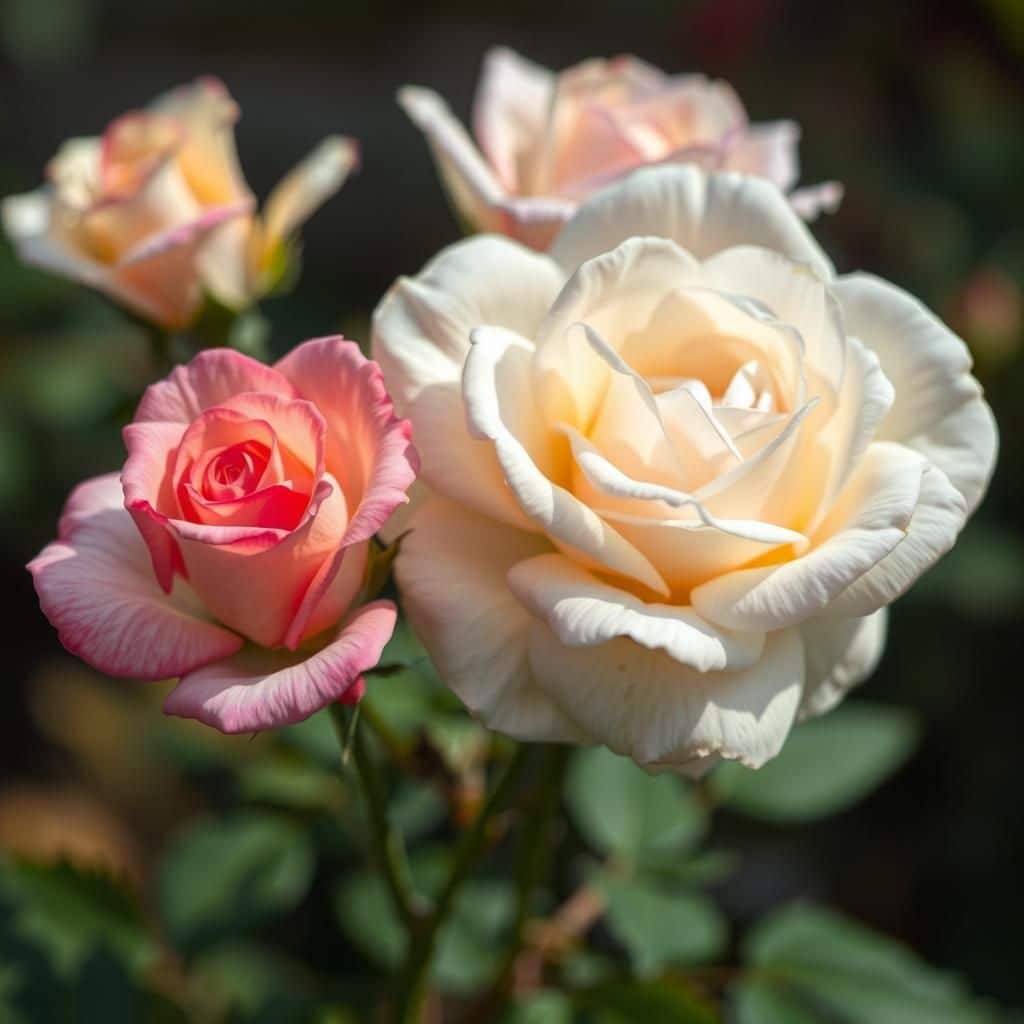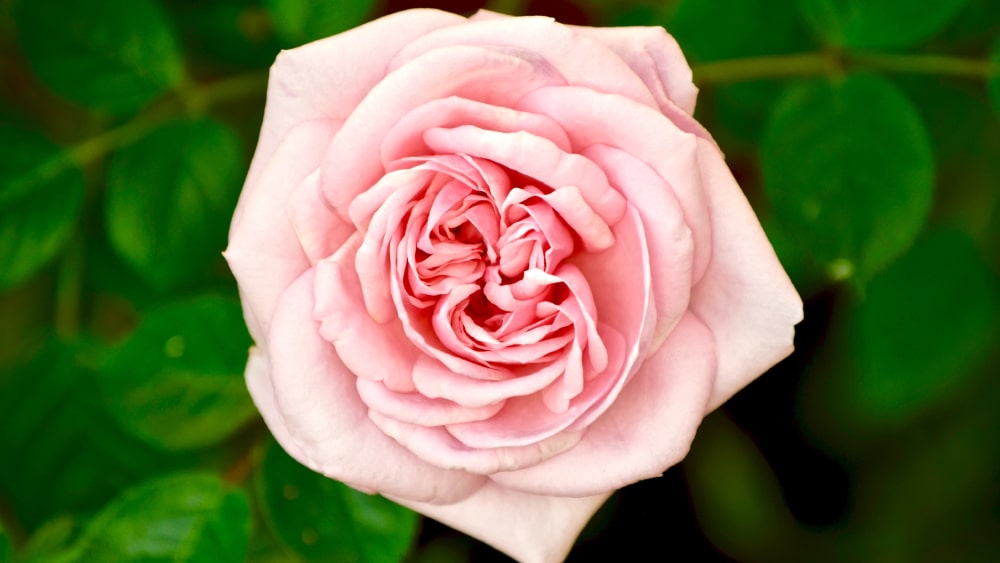What Month Do Most Roses Bloom? Discover the Best Time for Rose Gardening

When it comes to rose gardening, timing is everything. Understanding when most roses bloom can significantly enhance the success of your gardening efforts. Knowing the optimal months for blooming allows gardeners to plan their planting, care, and maintenance activities effectively. This article aims to explore the best months for rose blooms, considering various factors such as climate, rose varieties, and regional differences. Whether you're a seasoned gardener or just starting out, discovering the peak blooming period for roses will help you cultivate a thriving, vibrant garden. Join us as we delve into the world of rose gardening and uncover the secrets to stunning blooms.
When Do Most Roses Bloom?
Most roses typically bloom in the late spring, around May to early summer, depending on the specific variety of rose and the climate of the region where they are grown. In milder climates, such as USDA zones 7 to 10, roses may start blooming as early as April and continue until the first frost in late fall. Conversely, in cooler areas, the bloom cycle may be delayed until late spring. The key factor for rose blooming lies in the combination of daylight, temperature, and the proper care, including pruning and fertilization, which encourages a robust flowering season.
Factors Affecting Rose Blooming
The blooming of roses is influenced by several key factors, including climate, soil quality, and care routines. Different varieties of roses have varying requirements regarding sunlight and temperature. For instance, hybrid teas thrive in full sunlight and well-drained soil, while climbing roses may offer more flexibility. Additionally, the health of the plant, which is affected by pruning, fertilizing, and disease control, plays a significant role in determining when roses will bloom.
Different Varieties and Their Bloom Times
There are many types of roses, and each has its own bloom time. For example, climbing roses tend to bloom throughout the summer, while floribundas may produce abundant flowers starting in late spring. Furthermore, perpetual or reblooming varieties can yield flowers multiple times during the growing season after their initial bloom in late spring. Understanding the bloom characteristics of each variety helps gardeners anticipate the color and fragrance they can expect throughout the season.
Geographical Influence on Blooming Months
The geographical location significantly impacts when roses bloom. For example, in the southern United States, roses may begin their blooming cycle as early as March, whereas in the northern states, blooming might not start until June. These differences are mainly due to the varying lengths of the growing season and temperature, both of which influence how quickly plants emerge from their dormant state. Additionally, microclimates within a region can further alter blooming times.
Rose Care for Optimal Blooming
Proper rose care is essential for achieving optimum blooms. This includes regular watering, the application of balanced fertilizers, and conducting pruning in late winter or early spring to encourage new growth. Ensuring that the roses are planted in well-drained soil and receive adequate sunlight can also significantly affect their blooming potential. Support for climbing roses and protection from pests and diseases is crucial to maintaining their health and flower production.
Common Myths About Rose Blooming
There are various myths surrounding rose blooming that can mislead gardeners. One common belief is that roses should not be pruned before the full moon, which lacks scientific merit. In reality, timely pruning based on the growing season and weather conditions is more impactful than lunar phases. Another myth is that all roses bloom only once per year, whereas many modern varieties are bred to be reblooming, enriching the garden with flowers multiple times throughout the season.
| Rose Variety | Typical Bloom Month |
|---|---|
| Climbing Roses | June to August |
| Hybrid Tea Roses | May to September |
| Floribunda Roses | May to October |
| Old Garden Roses | June to July |
| Miniature Roses | Late spring to fall |
What month are roses in full bloom?

Roses typically reach their full bloom during the months of May to June in most regions. This timeframe may slightly vary depending on the local climate, specific rose varieties, and the care provided. During this peak season, you can expect to see a vibrant display of colors and fragrances, making it one of the most delightful times for rose enthusiasts and gardeners.
Factors Influencing Blooming Period
The blooming period of roses can be influenced by several factors:
- Climate: Warmer climates encourage earlier blooming, while cooler areas may delay it.
- Rose Variety: Different varieties have different blooming times, with some flowering earlier than others.
- Growing Conditions: Soil quality, sunlight, and watering habits play crucial roles in the health of the roses.
Types of Roses and Their Bloom Times
Different types of roses showcase unique blooming periods:
- Hybrid Teas: Usually bloom from late spring to summer, peaking in May and June.
- Floribundas: Begin blooming in early spring and continue through summer, with a significant show in late spring.
- Climbing Roses: Typically bloom in late spring, often producing multiple flushes throughout the summer.
How to Encourage Full Bloom
Encouraging roses to reach their full bloom involves specific care practices:
- Pruning: Regular pruning helps stimulate new growth and encourages blooming.
- Fertilization: Using the right fertilizer promotes healthy growth and vibrant blooms.
- Watering: Consistent watering, particularly during dry spells, ensures the plants remain healthy and prolific in blooming.
Signs of a Rose in Full Bloom
Identifying when a rose is in full bloom can enhance appreciation:
See also:
- Color Development: The flowers display their full, vibrant colors, indicating maturity.
- Fragrance: Roses in full bloom often release their strongest fragrances.
- Petal Formation: The petals fully open, creating a beautiful, inviting flower shape.
Regional Variations in Bloom Time
The blooming time can widely differ across regions:
- Temperate Zones: Typically experience full bloom in late spring, around May to June.
- Tropical Regions: May have blooming throughout the year, with peaks during cooler months.
- Arid Regions: Blooming may occur in early spring as temperatures rise and moisture is available.
What month do roses grow the most?

Roses typically grow the most during the spring months, specifically from April to June. During this period, the combination of warmer temperatures, increased sunlight, and sufficient rainfall create ideal conditions for rose plants to thrive. As the days lengthen and the soil warms up, the roses begin to break dormancy and enter their growing phase. Additionally, this is when many gardeners choose to fertilize their roses, contributing to their robust growth and vibrant blooms.
Factors Affecting Rose Growth
The growth of roses is influenced by several factors, including:
- Temperature: Roses prefer temperatures between 60°F to 70°F (15°C to 21°C) for optimal growth.
- Sunlight: A minimum of six hours of direct sunlight is essential for healthy growth.
- Soil Quality: Well-drained, nutrient-rich soil promotes better absorption of moisture and nutrients.
Best Practices for Spring Care
To maximize the growth potential in spring, consider the following care practices:
- Pruning: Pruning in early spring encourages new growth and removes any dead or diseased branches.
- Fertilization: Using a balanced fertilizer at the start of the growing season can significantly boost growth.
- Watering: Ensure regular watering during dry spells to keep the soil consistently moist but not waterlogged.
Common Rose Varieties for Spring Growth
Certain rose varieties thrive particularly well in the spring:
- Hybrid Teas: Known for their large blooms and long stems, they typically grow well when planted in spring.
- Floribundas: These provide clusters of flowers and are popular for their vibrant displays in spring gardens.
- Climbers: These roses are excellent for vertical gardens and tend to start growing vigorously as temperatures rise.
Pest and Disease Management in Spring
As roses start to grow vigorously, they can be susceptible to pests and diseases:
- Aphids: Monitor for these small insects and treat with insecticidal soap if found.
- Powdery Mildew: This fungus can appear in humid conditions; applying fungicides can help control it.
- Spider Mites: Regularly check for these pests and ensure proper watering, as they thrive in dry conditions.
Preparing for Summer Growth
As spring transitions to summer, it's crucial to prepare your roses for ongoing growth:
- Mulching: Apply mulch around the base of the plants to retain moisture and suppress weeds.
- Deadheading: Removing spent blooms encourages further flowering throughout the summer months.
- Continuous Monitoring: Keep an eye on the plants for signs of stress or pests as temperatures rise.
What is the flowering season for roses?

The flowering season for roses typically varies based on the climate and the specific variety of the rose. Generally, roses bloom from spring to fall, with peak blooming occurring in late spring and early summer. The flowering period can be affected by factors such as weather conditions, care practices, and the specific type of rose.
Factors Influencing Flowering Season
The flowering season of roses can be influenced by several factors, including:
- Climate: Roses thrive in temperate climates; extreme temperatures can delay or shorten their blooming period.
- Rose Variety: Different varieties of roses have unique blooming cycles; for example, climbing roses may have different peak blooms than hybrid teas.
- Care Practices: Proper pruning and fertilization can extend the blooming season and enhance the quality of the flowers.
Blooming Patterns of Different Rose Varieties
Roses can be categorized into different types based on their blooming patterns:
- Perpetual Bloomers: These roses bloom continuously throughout the season, providing a lasting display of flowers.
- One-Time Bloomers: Some varieties bloom only once a year, typically in late spring to early summer.
- Reblooming Roses: Also known as remontant roses, these varieties flower more than once during the growing season.
Peak Bloom Times Throughout the Year
Understanding the peak bloom times is crucial for rose enthusiasts:
See also:
- Early Spring: Many varieties begin to show buds and flowers, especially in warmer climates.
- Mid-Summer: This is often the peak flowering season, where roses are at their most abundant.
- Fall: Some roses can experience a second bloom, particularly if the weather remains mild.
Geographical Variations
The geographical location plays a significant role in the flowering seasons of roses:
- Tropical Regions: In these areas, roses may bloom year-round due to consistent warm temperatures.
- Temperate Zones: Here, roses typically bloom from late spring to early fall, with specific peaks.
- Cold Regions: Roses may have a shorter blooming season due to cold winters; they often bloom later in spring.
Best Practices for Encouraging Blooms
Caring for roses properly can maximize their blooming:
- Watering: Adequate watering is essential during the growing season to promote healthy blooms.
- Fertilizing: Using the right fertilizer can enhance blooming and strengthen the plants.
- Pruning: Regular pruning helps shape the plants and encourages more blooms by removing dead or weak growth.
What is the best season to see roses?

The best season to see roses typically falls in the spring and early summer. During this period, roses are in their prime blooming stage, offering a spectacular display of colors and scents. The climatic conditions in these months are generally favorable for healthy growth and abundant flowering. While specific varieties may bloom at slightly different times based on their unique characteristics, most gardeners and rose enthusiasts agree that the height of the rose season is during May and June.
The Ideal Climate for Roses
Roses thrive in mild climates with adequate sun exposure and good drainage. This climate is especially prevalent during the spring months, which provide the right combination of warmth and moisture to support growth. Key factors include:
- Temperature: Roses prefer temperatures ranging from 60°F to 75°F (15°C to 24°C).
- Sunlight: They require at least 6 hours of direct sunlight daily.
- Moisture: Well-drained soil is crucial to prevent root rot.
Varieties of Roses and Their Blooming Times
Different types of roses have varying blooming schedules. Understanding these can help you plan your visits effectively. Some common varieties and their blooming times include:
- Hybrid Tea Roses: Typically bloom from late spring into fall.
- Floribunda Roses: Often bloom in waves throughout the spring and summer.
- Climbing Roses: Usually bloom in spring, with a potential for a second bloom in late summer.
Care Practices to Enhance Blooming
To ensure roses bloom beautifully during the prime season, proper care is essential. Key practices include:
- Pruning: Regular pruning in late winter or early spring stimulates new growth.
- Fertilizing: Applying a balanced fertilizer encourages robust blooming.
- Watering: Consistent watering especially during dry spells supports health and bloom.
Best Locations to See Roses in Season
Visiting gardens known for their rose collections during the blooming season can enhance the experience. Notable locations include:
- Botanical Gardens: Many have dedicated rose gardens featuring diverse varieties.
- Public Parks: Parks often feature rose displays along walking paths.
- Rose Festivals: Seasonal events celebrate the beauty of roses, often showcasing the best blooms.
Impact of Seasonal Changes on Rose Blooming
Seasonal changes can significantly impact the timing and quality of rose blooms. These influences include:
- Weather Patterns: Unseasonable frosts or excessive rainfall can affect blooming schedules.
- Climate Change: Altered temperature patterns may shift traditional blooming periods.
- Soil Quality: Changes in soil conditions can also impact the overall health and blooming success of roses.
Questions from Our Readers
What month do most roses bloom?
Most roses typically bloom in the spring months, primarily from April to June. However, this can vary depending on the variety of the rose and the climate in which they are grown.
Can roses bloom at different times depending on the type?
Yes, different types of roses may bloom at various times throughout the year. For example, some perennial varieties may bloom earlier in the season, while others may have a longer growing period that allows for blooming later in the summer or even fall.
How can I encourage my roses to bloom?
To encourage your roses to bloom, ensure they receive adequate sunlight, proper watering, and fertilization during the growing season. Regular pruning also helps remove dead or unhealthy wood, promoting new growth and more vibrant blooms.
Do environmental factors affect rose blooming?
Absolutely, environmental factors such as temperature, soil quality, and moisture levels can significantly impact when and how prolifically roses will bloom. For optimal growth, it’s important to provide a suitable growing environment that addresses these factors.
See also:

If you want to read more articles like What Month Do Most Roses Bloom? Discover the Best Time for Rose Gardening, we recommend you check out our Roses category.
Leave a Reply